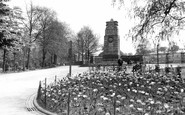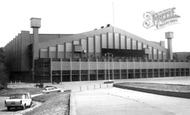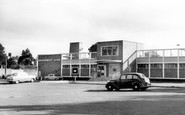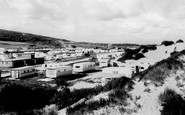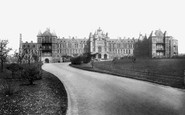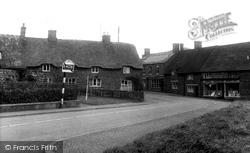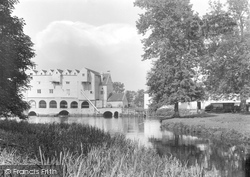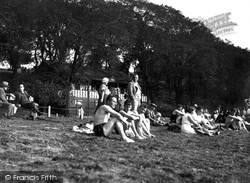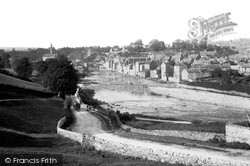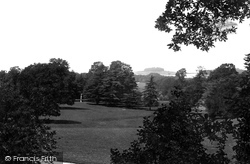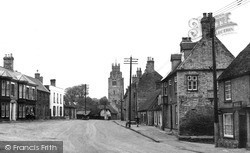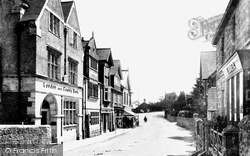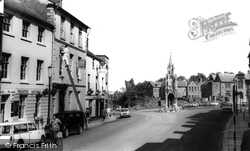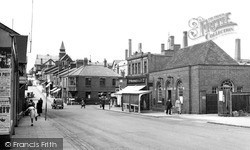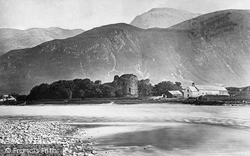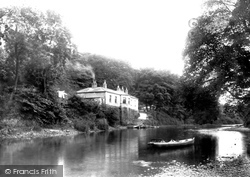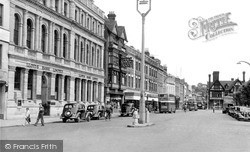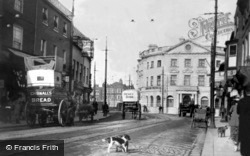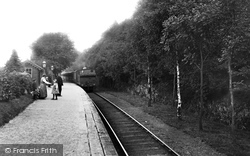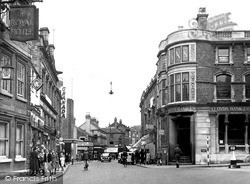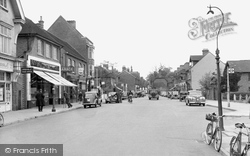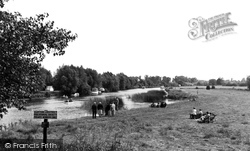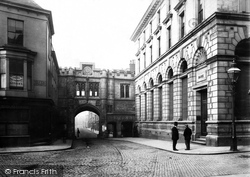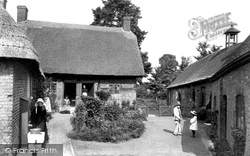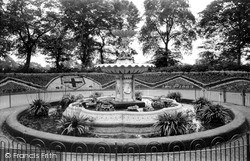Places
3 places found.
Those places high-lighted have photos. All locations may have maps, books and memories.
Photos
68 photos found. Showing results 261 to 68.
Maps
12 maps found.
Books
15 books found. Showing results 313 to 15.
Memories
7,562 memories found. Showing results 131 to 140.
Maelog Lake Hotel
A schoolfriend of my former wife (now sadly deceased) married a Rhosneigr man and lived in the village. In order to visit them my wife, I and our year old daughter visited Rhosneigr first in 1971, again in 1973 and for the last ...Read more
A memory of Rhosneigr in 1971 by
Clifton Park
I used to live in tree-lined Lister Street. All I had to do was climb over the back wall to the rear of my house to get into Clifton Park. I remember Sunday School held at the Bandstand: 'Sunshine Corner always jolly fine, is for ...Read more
A memory of Rotherham in 1940 by
Windsor Road
We moved to Bromley Cross about 1947 just before my sister Virginia was born, it was a lovely new prefab, but I don't remember much about the inside of it apart from the wood-burning stove, that sticks in my mind for some ...Read more
A memory of Bromley Cross in 1947 by
Family Of Fowler
Not a memory but an historical fact. I have traced my family back to Leigh circa 1750. The patriarch was Anthony Fowler, a carpenter from Bishops Cleeve. He married Mary Attwood of Bishops Cleeve in 1749. They had 10 children, ...Read more
A memory of The Leigh by
1948 Olympic Games
My father represented Great Britain in the 1948 Olympic Games. He (Thomas Patrick Holt) and his brother John and two sisters were on the swimming team. Unfortunately, Thomas came fourth in his event, as he was struck down with a ...Read more
A memory of Wembley in 1948 by
Broadway Lido.....My Home
Yes.....the Broadway Lidi was my home. I am Stuart Smith, my father Gordon Smith was the first manager (well, they called it superintendent then) at the Lido. We moved there when I was about 3 years old, and lived in a ...Read more
A memory of Bridgwater in 1960 by
My Mother My Birth Place
I know very little about the start of my life at the warren i was born in the summer of 1965 at chatsworth house in prestatyn and my mother was resident there in a converted bus belonging to my aunt she had 6 a lot of kids ...Read more
A memory of Gronant by
The Memories Are Endless
Good morning from Waterloo, Canada. I was absolutely thrilled with your site and stumbled on it quite by chance. I was born in 1943 at my grandparents house at Yew Tree Terrace just off Station Rd. I grew up in Shepley, ...Read more
A memory of Shepley in 1957 by
Working As Staff Nurse At Western Infirmary
I worked as a staff nurse at this fine hospital for several years in the sixties. I was hired to work in the Renal Unit-however, it had not yet opened when I started. I was put to work wherever extra hands ...Read more
A memory of Glasgow in 1966 by
The Fair Green
The Fair Green was one of the first places my sister Valerie Cooper (nee Hook) worked in her capacity as an apprentice horticulturist for the Mitcham Council. When she went for the job they told her that she would have to do the same ...Read more
A memory of Mitcham in 1961 by
Captions
2,501 captions found. Showing results 313 to 336.
Just over two miles east of Upper Boddington, Byfield is a village that expanded with the arrival of the railway. This view is on the High Street, part of the A361 Banbury to Daventry road.
On the left is the covered entrance to the Playhouse.
This water-mill, powered by a hidden undershot wheel, stands on the bank of the river Bure, and is built of entirely of wood. There are two large millstones leaning on the small annexe.
This summer recreation corner on the banks of the Wharfe lay below the present Collingham Wood House on the Wetherby road.
There was a time when Barnard Castle was one of a number of prosperous towns in the Palatinate; the others were Durham, Darlington, Hartlepool, Stockton, Sedgefield, Staindrop and Wolsingham.
The view from Kingston Lacy House shows the wooded Badbury Rings on the horizon.
This village stands on the south-west edge of the Isle of Ely. In the 17th century the fens around Sutton were drained by farmers, with the help of wind pumps.
Another view of the Parade, showing Lowmans, baker; Lloyds Bank; Jenkins, newsagent and tobacconist; National Provincial Bank; Dews, children's clothing; and an estate agent.
In the 1870s a Dr Prince persuaded Lord Abergavenny, the landowner, to develop this area, bordering the Ashdown Forest and set at a healthy 800 ft above sea level, as a health resort.
The Working Mens' Club is receiving a lick of paint. The Working Men's Club is now at The Lodge, Welton Road, just out of sight to the left down Abbey Street.
The town of Winsford did not exist until the Weaver River was canalised in 1731 - this was needed to link the local salt fields with the Mersey River.
This 13th-century castle, home of the Comyn family, is built in the form of a square, with round towers at the corners.
The name derives from bos, Latin for ox, and ton, Anglo-Saxon for township. A Roman villa was here from AD200.
Lying peacefully on the banks of the Ure, the land was given to the monks by Conan, son of Alan the Red, who built Richmond Castle.
In the 19th century, banks often built very imposing buildings to reflect their status in everyday life.
This view, looking west from the present Caversham Bridge past the Reading Rowing Club behind the coach, shows well the flat south bank in contrast to the steep and heavily treed Caversham bank.
This view of King Street looks east towards the grand Portland stone bank at its end.
This splendid branch railway ran from Ulverston to Newby Bridge and Lakeside at the foot of Windermere.
The architecture of the High Street reflects the wealth that a depressed town gained from its booming boot and shoe industry in later Victorian times.
Cobham is architecturally not the equal of the similarly named Chobham.
Here Frith's photographer was looking from the east end of Scott's 1864 bridge towards the ridge descending to the flatter land of Burcott and Berinsfield; the east part of the village
This wonderful atmospheric view looks through Stonebow into the continuation of High Street which follows the line of the Roman road to London, later known as Ermine Street.
More recently it was a retirement home for servants of the Bankes family, owners of the Kingston Lacy Estate until 1981. The 14 almshouses date from the 16th-19th centuries.
The park, situated along the Yarm Road, was the gift of Sir Robert Ropner, and was opened by the Duke and Duchess of York on 4 October 1893.
Places (3)
Photos (68)
Memories (7562)
Books (15)
Maps (12)



